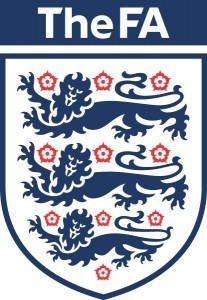Brent Adamson's Blog, page 30
March 12, 2012
Sales Lessons from the Military
 In the military, soldiers are taught to follow the principle of Commander's Intent:
In the military, soldiers are taught to follow the principle of Commander's Intent:
"To preserve the initiative, subordinates must act independently within the context of an overall plan. They must exploit successes boldly and take advantage of unforeseen opportunities. They must deviate from the expected courses of action without hesitation when opportunities arise to expedite the overall mission of the higher force. They will take risks, and the command must support them." ¹
Commander's Intent is a clear, concise statement of the specific goal a commander is looking to achieve. Something like: "Capture and hold that hill until reinforcements arrive."
That said, no step-by-step instructions are given on how to capture and hold the hill because they've learned that once soldiers engage in battle, they quickly have to adapt to the situation on the ground in unanticipated ways. The squad therefore is required to develop their own plans, often in-the-moment, translating thought to action, while maintaining the overall intention of the commander.
The Sales world is no different. First line sales managers are expected to lead their teams into battle each day to win business and grow share of wallet. That said, unlike the military, we bind our sales teams with processes and policies that try to account for every move the rep makes in the field to the extent that we often inhibit, rather than facilitate, winning business. Customers and markets frequently act in unanticipated ways and no matter how much one plans, arming the field for every possible scenario is a futile task.
It's no wonder that in today's complex sales environment, the skill that defines top-performing sales managers is their ability to innovate—to find new ways of solving deal-level problems or positioning the offer. Importantly, sales innovation is not about managers creating a new value proposition or new set of capabilities but rather collaborating with reps to understand what's holding up a deal and finding innovative ways to move it forward (i.e., innovating within the overall goal or intention set by the commander).
What's more, the principle of Commander's Intent is even more pertinent when pursuing emerging demand—deals where customer needs are not yet well understood and agreed upon. Emerging demand opportunities require salespeople to navigate through greater ambiguity, especially in the early stages of the sales process, looking for clues in the customer organization that confirm latent need/opportunity. Typical sales processes built on the strategy of gross activity and sales efficiency create a counterincentive for shaping demand, with salespeople sticking to prescribed and accepted plays than innovating in the field.
Understandably, too much autonomy risks salespeople making bad decisions. But, too little autonomy stifles them to win business. Commander's Intent provides the much needed balance.
SEC Members, to learn more, review our study on sales manager innovation and the ideation toolkit, and follow our progress on the 2012 study, shaping demand to win business.
¹ Baillergeon, Rick and Sutherland, John, Tactics 101: 027. Commander's Intent, Armchair General (June 2008)
WAR: The Latest in an Alphabet Soup of Loyalty Metrics
(This is a guest post by Judy Wang of the Customer Contact Council, our sister program for heads of customer service and contact centers.)
 Recently, the Harvard Business Review published an article introducing the "Wallet Allocation Rule." As the name suggests, this new metric measures the share of wallet that is allocated to companies – or simply, how a customer divides their spending among a company and its competitors.
Recently, the Harvard Business Review published an article introducing the "Wallet Allocation Rule." As the name suggests, this new metric measures the share of wallet that is allocated to companies – or simply, how a customer divides their spending among a company and its competitors.
The theory behind this metric is simple:
Think about how much your customer prefers your company, and then
Consider the number of competitors your customer is choosing between.
Knowing these two things will let you understand how your customers spend money, and how your company is doing relative to others. For instance, if you were the customer's first choice and there is one competitor, then your position is different than if you were the second choice but there are many, many others behind you. Understanding this difference can help define strategy and hone in on certain initiatives.
To me, the key lesson that stood out in general is that metrics can't be evaluated in a vacuum. It's nice to know that your company is performing well, but when you discover that the "well" is less well than your competitors, the story changes. It's important, then, to understand performance in its broader context.
So take customer effort for example. Even though the Customer Effort Score in service interactions is the best predictor of customer loyalty, merely measuring it in isolation can paint an incomplete picture. More than just evaluating the score by itself, it's important to consider the context surrounding it.
How does the score stack up against others in your industry, your geography?
Does the score change or remain static over time?
What are the causes to a high effort score, and why do they exist?
More than just a static number, the Customer Effort Score can reveal a lot about your company and your performance if you analyze it in context. To the point made in the HBR article, you aren't getting the whole story if you aren't looking at the context.
How do you contextualize your performance? What are some metrics you evaluate, and how do you analyze the data?
SEC Members, use our interactive Sales Metrics Benchmarking Tool to see the metrics other sales organizations are tracking, and for more information on the Customer Effort Score metric, register for our upcoming webinar on April 5th.
March 7, 2012
Are Lone Wolf Sales Reps Right for Your Organization?
 The SEC team has had a lot of member discussions recently around the value of Lone Wolf sales reps, and whether having them is a good or bad thing for your organization.
The SEC team has had a lot of member discussions recently around the value of Lone Wolf sales reps, and whether having them is a good or bad thing for your organization.
(As a quick recap, SEC research found that five sales rep profiles exist in nature, one of which is the Lone Wolf. Lone wolves follow their own instincts and are self-assured, yet can be difficult to control.)
I wanted to share the team's thoughts as well as some of my personal beliefs around this topic, and would encourage folks reading this post to do the same in the comments section. I'll also do my best to summarize the member discussion that has taken place recently around the potential "good" and "bad" of this rep profile.
Let's first talk about the "good"…
The short answer is that the Lone Wolf profile delivers commercial outcomes, second only to Challengers. This can be a very valuable tool to leverage as a senior sales leader. Take, for example, a high growth environment. In this type of environment, there can be a need for a salesperson to declare independence and just get out there and sell something new to new customers. In fact, in smaller organizations (smaller = smaller total company revenue), we tend to see many more High Performers exhibit Lone Wolf-type behaviors – enough to conclude that this probably a lot to do with the maturity of the company.
So Lone Wolves are potentially good at delivering results…and that's important.
That said, as we think about the potential effect a Lone Wolf can have on the broader organization, the answer isn't as cut and dry. Let's talk about the "bad"…
Here are the obvious ones in my mind:
They don't particularly like to be managed and don't have much interest in complying with organizational policies, processes, etc.
They can be large consumers of internal resources, as they ignore engagement rules for functional partners (like product specialists, for example)…they know people will pick up the phone and drop everything to help them
Yes they exceed quota, but how? Is it by selling unprofitable deals for the company…or leaving margin on the table by selling near-term focused deals without much scoping for broader solutions potential?
As companies get larger and more mature, there is a greater need to scale capabilities. The question then becomes, do the very same Lone Wolf capabilities that likely built the firm all of a sudden start inhibiting growth?
While we haven't tracked progress over time with members, the fact that the larger, more established companies invariably end up needing more Challengers suggests very strongly that companies may need to change their operating model if they're ever to make the shift from a $500-$750M company, to a $XBn+ company that can sell solutions effectively.
The conclusion? It probably doesn't make sense to go out and get rid of salespeople that demonstrate Lone Wolf type characteristics just because you are maturing as a company.
That said, if you're a sales leader in this more mature environment, and you're looking to scale capabilities and upskill in the right ways – you should focus on attributes that lead to the "right" type of success for not only the individual, but the organization as well. And here, the Lone Wolf attributes probably aren't the answer.
SEC Members, for more information on the five sales rep profiles, visit our Challenger Rep topic center. And for guidance and resources on building Challenger reps in your organization, see our Five Key Lessons on Developing Challengers as well as our new Challenger Starter Kit.
March 6, 2012
Turn Your Reps into Detectives
 We all want our reps to know exactly what's going on in the customer organization. Often, this means honing reps' discovery and questioning skills through periodic skills training. That said, despite clocking a number of training hours, reps continue to remain clueless on what matters most to customers.
We all want our reps to know exactly what's going on in the customer organization. Often, this means honing reps' discovery and questioning skills through periodic skills training. That said, despite clocking a number of training hours, reps continue to remain clueless on what matters most to customers.
Want to know why?
It's because it's not about reps' ability, but rather reps' willingness, to ask the right questions.
In today's world of complex solutions selling and the existence of multiple customer stakeholders in the purchase process, reps find it difficult to close deals. They fear that if they ask too many questions, they might end up derailing the already complex purchase decision. As a result, reps tend to rush through the initial stages of the sales process and end up spending considerable time in negotiations while closing the deal. Failing to ask the right questions and uncovering obstacles early in the deal also means that managers don't have the right information in time to help reps find possible solutions.
So, how do you change a rep's mindset from "always be closing" to "explore and ask questions"?
Oakwood, a temporary housing provider, faced this exact situation. To overcome reps' hesitancy to ask questions, Oakwood designed an innovative program—"Detective Workshops" that simulate murder mysteries in order to build an investigative mindset in the sales force.
These detective workshops place reps in a non-sales scenario that emphasize a questioning mindset. The workshop also helps reps internalize the importance of gathering all relevant information before drawing conclusions. In addition, regular "sales huddles" with senior leadership and cross-functional stakeholders reinforce the new questioning mindset and culture in the field.
We recently spoke with Ken Revenaugh, former Vice President of Sales Operations at Oakwood, about how to build reps' questioning mindset and reinforce it in reps' everyday workflow.
March 5, 2012
The Latest Sales Trends in Asia
 We recently conducted an analysis of executives' outlook on business conditions in Asia across 2012. The report surfaced some interesting data and findings about the overall sentiment and growth expectations for the region, but what really drew our attention were some of the sales-specific indicators.
We recently conducted an analysis of executives' outlook on business conditions in Asia across 2012. The report surfaced some interesting data and findings about the overall sentiment and growth expectations for the region, but what really drew our attention were some of the sales-specific indicators.
Mainly, executives continue to be optimistic about top-line growth in Asia as well as the economic outlook for the region, though their expectations for the level of growth have waned slightly in the past quarter.
New research from our Emerging Markets team shows that 70% of polled executives expect their revenues in Asia to be higher in the next 12 months (down from 83% in the previous quarter), and many also expect their respective industries to continue expanding in Asia.
Positive sentiment on Sales continued to surge higher, as most respondents still anticipate higher sales to both new and existing customers in Asia across 2012. (Sentiment on sales to existing customers improved dramatically from the previous quarter.)
However, 60% of respondents anticipate an increased reliance on discount and incentive policies (up from 42% in the previous quarter).
The outlook on customer loyalty also improved slightly: 48% of respondents expect loyalty to increase across 2012 (this is up from 42% last quarter).
On the talent front, executives' outlook improved, driven by expectations of higher employee engagement and lower turnover in the Asian labor market.
SEC Members, download the full report to get more details on the above trends, including the top management concerns for executives in Asia, and the specific countries within the region they expect to contribute most to sales growth.
February 29, 2012
The 3 Most Widely Used B2B Segmentation Methods
 There are a myriad of different B2B customer segmentation approaches being used out there, but they can essentially be boiled down to three basic methodologies that seem to be the most widely used and also the most actionable: Industry/Firmographic, Customer Tiering & Needs-Based Segmentation.
There are a myriad of different B2B customer segmentation approaches being used out there, but they can essentially be boiled down to three basic methodologies that seem to be the most widely used and also the most actionable: Industry/Firmographic, Customer Tiering & Needs-Based Segmentation.
Let's compare the benefits of using them, and also some of the challenges our members experience when trying to implement these segmentation approaches in their organizations:
1) Industry/Firmographic – This approach is to the business-to-business world as demographic segmentation is to the business-to-consumer world. If we think of demographic segmentation as helping organizations group consumers by shared characteristics (like age, gender, ethnicity, income level and zip code), then we can picture industry/firmographic segmentation as helping organizations characterize customers by industry attributes (such as its competitive environment and fixed costs, or simply size and geography).
Benefits : Relatively low cost, easy to measure and easy to communicate to sales
Drawbacks : Difficult to scale since customer needs can vary within a segment
Company Example : See how FedEx created tailored, segment-specific offerings and collateral based on customers' industries.
2) Customer Tiering – This approach incorporates a couple of key factors such as potential fit (the customer's alignment to a supplier's strategy) and opportunity (long-term revenue potential at the customer's organization).
Benefits : Incorporates more of a forward look, since it captures growth related information that is often overlooked in other methodologies
Drawbacks : Does not guarantee a homogenous set of needs (similar to industry/firmographic), and also requires a significant amount of time from management to get it up and running
Company Example : See Schneider Electric's opportunity/fit segmentation scorecard.
3) Needs-Based Segmentation – Often seen as the most predictive method, this approach will often replace a behavioral- or transactional- focused view in many organizations as it focuses on the problems our customers are trying to solve.
Benefits : Very scalable since it limits the number of segments to a manageable set and is also very resonant with customers
Drawbacks : Because it's tough to just look at a customer and know their needs, it can be very difficult for the sales force to apply a needs-based segmentation lens when they are out with a prospect or customer
Company Example : See Dow Chemical's approach for identifying customer segments that exhibit similar needs and loyalty drivers.
Let's draw some high-level conclusions regarding these methods. As you move from industry/firmographic…to customer tiering…to needs-based segmentation methods, there is an increase in the following:
The complexity associated
The resources needed (staff, skill set, money, data, etc.)
The insight these models provide
We'd be interested to hear if your company uses any of these methodologies, or perhaps more than one to ensure a richer understanding of the customer. What benefits and/or challenges have you experienced with them? Let us know in the comments section below.
February 28, 2012
Challenging in the Channel
 Our research on the Challenger Rep has taken hold in many organizations and with many sales leaders. Many of these organizations are focused on selling directly to their end customer. But there are many sales organizations out there that sell indirectly through partners and distributors (and of course those that have both direct and indirect sales channels). How do the Challenger concepts relate to them?
Our research on the Challenger Rep has taken hold in many organizations and with many sales leaders. Many of these organizations are focused on selling directly to their end customer. But there are many sales organizations out there that sell indirectly through partners and distributors (and of course those that have both direct and indirect sales channels). How do the Challenger concepts relate to them?
Here, the questions often come at a fast and furious pace: "How does Challenger work in the indirect environment? Who should I be teaching for differentiation? How do I manage this effectively if we want to implement the Challenger approach?"
At the end of the day, here's the big issue underlying all these questions: a lack of control of your partner's sales force. It can be a lot to expect them to sell your products and solutions in a differentiated way.
Now, it would be easy to say that it's impossible to do or that we shouldn't spend the time and the money. But, there's a major reason we shouldn't do that: customers still require unique perspective on their business and need their assumptions "challenged" (in fact, this drives 53% of customer loyalty).
So, knowing that we can't ignore this changing sales environment, what can we do? Here's a few ways to overcome the hurdles of implementing Challenger in the indirect channel:
1. Teach your partners—Leverage Commercial Teaching concepts to explain "why" partners should care about selling your products better, differently and in a unique way. In short, teach you partners and provide them unique perspective on why you are best positioned to be a leader in the markets they sell to.
In the indirect environment, it's really about creating two different teaching pitches. One that will help you be successful with your channel partner – and one that will help your channel partner be more successful selling to their customer.
2. Certify on Challenger skills—Develop commercial teaching messages for partners and upskill and certify them on their delivery of those messages and other Challenger Rep skills. You can mine and provide the insight to teach end customers, through your partners. But this requires the extra effort of training and certification to overcome the lack of control issue.
See some example certification programs as well as our topic center on training and upskilling channel partners.
3. Collaborate with partners on the Challenger approach—Utilize effective account planning to build strategic goals with partners during the account planning/category review process.
See how Cargill uncovers and sets partners' expectations through a joint planning process.
4. Reward the Challenger behaviors—Use metrics to hold partners accountable for the outcomes you want to achieve, and tie incentives to their demonstration of the Challenger behaviors.
See how Apollo measures and rewards partners using both volume- AND behavior-focused metrics.
While it isn't an easy answer by any means, there are ways to drive Challenger Rep behaviors if you're selling in an indirect or channel model. What other strategies have worked for you when translating Challenger to the channel?
February 27, 2012
Hiring the Next English Football Manager?
 If, like me, you are a keen football fan (or soccer fan, for those in the US) – then you may be aware of a small job vacancy here in England. That's right, the job of the England Football Manager!
If, like me, you are a keen football fan (or soccer fan, for those in the US) – then you may be aware of a small job vacancy here in England. That's right, the job of the England Football Manager!
For those unaware of the current debacle, Fabio Capello (famously successful Manager at Real Madrid and AC Milan) recently resigned from his position as Manager of the English national side with less than four months to go until the European Championships.
In between sifting through all the press articles and dreaming that I had the qualifications to fill the vacancy, I was reminded of a recent call with an EMEA member in the Chemicals industry who was articulating the importance of managers.
One of the most striking aspects of our conversation – and the link to the fate England – was when we were talking about the costs associated with a failed manager.
The member said, "The first-line sales manager is what makes or breaks you. A hiring mistake could cost us $3 million to $4 million in lost sales." (Incidentally, here in England, it cost the English Football Association (FA) approximately £6million per annum.)
Given this critical vacancy is yet to be filled, it seemed like a good time to revisit the key credentials sales organisations need to look for when hiring managers and perhaps provide some tips to the English FA along the way.
One of the many similarities between sport and sales is the desire to win – all the time! Whilst every manager sets a strategy for his/her team (be it a formation or a sales process), both SEC data and footballing history tell us that at some point your game plan is going to fall apart – in fact, one SEC member told us recently that nearly 72% of lost deals were simply due to the sales process stalling out with the customer giving no decision at all.
This is when you need a manager to do something different. And according to sales reps, that "something different" that truly separates the great from average manager is the extent to which they can innovate on the game plan. Here is how innovation breaks down:
Investigate obstacles that are blocking the deal
Create solutions to overcome deal inertia
Share practices across broader team
(SEC Members, learn how to build innovation skills within your Managers with our Ideation Toolkit and our Investigative Questioning Toolkit.)
One of the reasons Fabio Capello did not endear himself to the English fraternity was due in part to his unwillingness to innovate on formation, tactics, styles and player selection – his insistence on a 4-4-2 against Germany in South Africa proved flawed.
So, if we're looking for innovative managers, how do we find them?
The most popular pastime in England right now is speculating on the manager names that could or should replace Fabio Capello, ranging from external candidates to potential internal promotions. But given the importance of the manager role, both the English FA and sales organisations would do well to learn more about the comprehensive manager hiring processes we've profiled from Hewlett Packard & Kohler.
For internal candidates, Kohler undertakes a rigorous pre-promotion screening and training exercise to ensure that successful sales people and promotion candidates possess and demonstrate the core skills necessary for success in the managerial role. Their pre-certification process ultimately halved the time needed for onboarding and cut manager failure rates by up to 85%.
For external hiring, Hewlett Packard uses a similarly comprehensive, yet compressed screening process for manager candidates that revolves around a simulation of the "Day in the Life" of an HP sales manager. This exercise ultimately reduced onboarding time by 75% and led to consistent high performance within the first 90 days in role.
So, for those following the English Football saga, perhaps we allow Stuart Pearce to take the reins and provide a platform for him to showcase his skills (as he has proved at U21 level)? Or, on the flip side, do we give into the clamour for Harry Redknapp to take charge and give him his simulation at the upcoming European Championships?
What manager hiring successes or advice would you share with the English FA?
SEC Members, for more information and resources on hiring and building successful first-line sales managers, visit our Developing Managers topic center or review our latest study on Building Innovative Sales Managers.
February 21, 2012
4 of the Most Popular CRM Apps
 Does your company use Salesforce.com as your CRM? If so, you're going to want to read this.
Does your company use Salesforce.com as your CRM? If so, you're going to want to read this.
CRM, like many other initiatives companies roll out, is often plagued with adoption problems. This shouldn't come as a surprise because, as valuable as CRM is to sales organizations, entering data into the system can be a pain for sellers. So not only do companies need to pick the right CRM system for their organization and make sure their reps see value in using it, but they also need to make it easy for reps to use.
One way Salesforce.com users are combating this issue is by supplementing their Salesforce interface with apps from Salesforce.com's AppExchange. Not only can apps (also often referred to as plug-ins) do a lot of the heavy lifting for reps when it comes to data entry, but they can also increase the functionality, efficiency, and effectiveness of your CRM system as a whole.
Here are four of the hottest Salesforce apps that companies are integrating into their systems:
1. Email Integration for Salesforce (Free 30-day trial, $10/user/month thereafter)
What it does: Email Integration for Salesforce, by iHance, integrates any email system (from Outlook to Lotus to Groupwise) into Salesforce, automating email logging and contact creation for reps.
How it helps: Not only does this take the burden of manually inputting data into the system off of reps' shoulders, but it also saves them valuable time they can spend pursuing leads. Emails that don't match existing contacts in Salesforce are moved to a pending bin for reps to quickly create new contacts or leads later so emails never fall between the cracks. This app also enables sales teams to review each other's emails, fostering a social network with better information and strategy sharing.
2. Marketo Sales Insight ($49 per seat, 10 seat minimum)
What it does: Marketo Sales Insight is a native Force.com sales app (meaning there are no new tools to install or additional IT support needed) that helps sellers prioritize and act on leads.
How it helps: One feature that this app offers reps is the ability to send out "smart" email campaigns that automatically alert reps when prospects open their emails, visit the company website, or exhibit other 'buying' signals. Sellers can then share information about their leads and contacts with colleagues through Salesforce Chatter.
3. Conga Composer (Free 30-day trail, $60 per 5 users/month thereafter, volume discounts available)
What it does: Conga Composer is a popular app that helps save reps time generating custom quotes, contracts, and/or account plans.
How it helps: It enables reps to gather data from multiple sources using Salesforce or Force.com reports, and then merge them to produce sales documents in Word, Excel, or PDF forms. Reps can then save, print, email, and/or integrate these documents into e-signature solutions, making sales prep less of a burden. The app also automatically logs document related activities, follow-up tasks, and updates fields for reps, helping them save even more time.
4. Adobe EchoSign (Free 14-day trail, $29.95/user/month, minimum of 10 users)
What it does: Adobe EchoSign is one of the most popular e-signature applications available for Salesforce that enables reps to send contracts for legally binding digital signatures.
How it helps: The app makes the contract signature process easier and more efficient, and also logs copies of completed contracts directly into Salesforce. EchoSign also works on almost any device (PC, Mac, iPhone, iPad, Blackberry, etc.) and incorporates more than 20 languages. This app can also be integrated with other apps like Conga Composer.
There is a seemingly endless supply of other valuable plug-ins available on the AppExchange, so if you are in the process of evaluating apps to bolster your CRM system, make sure to check out these popular apps as well:
Data Integration:
Informatica Cloud Salesforce Integration
Pricing, Quotes, and Proposal Configurator:
BigMachines Configurator, Quotes, Pricing, Proposals and Contracts
Data Hygiene:
DupeBlocker
CountryComplete
Social Networking:
LinkedIn for Salesforce
Salesforce for Twitter and Facebook
Compensation:
Xactly Express: Sales Compensation and Incentive Commission Management
SEC Members, to learn more about making your CRM easier for reps to use, visit our CRM adoption topic center and read some of your peers' perspectives on measuring CRM adoption. Also make sure to see what your peers are saying about Salesforce.com apps in a recent discussion featured on our Sales Ops forum.
The Promise and Perils of NPS
(This i s a guest post by Shelley West of the Marketing Leadership Council , our sister program for heads of Marketing.)
 I was recently at the Satmetrix Net Promoter 2.0 conference in lovely San Francisco learning how companies big and small across a variety of industries employ this method of collecting customer feedback.
I was recently at the Satmetrix Net Promoter 2.0 conference in lovely San Francisco learning how companies big and small across a variety of industries employ this method of collecting customer feedback.
For the uninitiated, Net Promoter Score (often referred to as NPS) is a way of assessing a company based on just one question: "How likely are you to recommend ABC Company to a friend or colleague?" on a scale of 0 to 10. Those who answer 0-6 are "Detractors," 7's and 8's are "Passives," and 9's and 10's are "Promoters." Net Promoter Score is determined by subtracting Detractors from Promoters. The system is based on the joint work of Bain & Company, Inc. and Satmetrix.
Honestly, I am not really sure what I think of NPS – can you really figure out what you need to know about how your company is doing with just one question?
As questions go, it seems like a good one, but is it enough? While it may be "The Ultimate Question" (as so declared by Fred Reichheld in his 2006 book that popularized this method), the answer is certainly not that simple. To be fair, even within the book, Mr. Reichheld (who was a speaker at the conference) admits you don't just ask one question. At very least, you ask two – the second being "Why did you reply the way you did to the previous question?"
The companies who believe in NPS (and there are many) and use it well (perhaps fewer of those), know that it isn't really about a score. (SEC Members, view the results of our recent sales metrics benchmarking work to see how many companies use NPS as one of their primary customer metrics.)
NPS, when done right, is a quick-pulse way to spot problems and, more importantly, to address and try to solve those problems. Analysis of the text verbatims from the "Why" questions can provide rich insight as to the root cause behind what is causing customers to be Detractors. And the best companies have closed-loop systems that follow-up with Detractors to try and fix the problem (or at least understand it better to avoid repetition in the future).
Many organizations have tied compensation of executives to Net Promoter Score, which really means they are tying compensation to having happy customers, not just profits. The presentations I saw at the conference are not about survey techniques or research methods, but about how companies orient their corporate focus around and then truly deliver an exceptional customer experience. (SEC Members, see what drives an effective customer experience.)
There are a lot of ways to misuse NPS as well. The biggest error seems to be managing the score instead of the elements of the customer experience that drive it.
As an example, when you take your car to be serviced at the dealership and as you leave your service tech says something like, "In a few days you'll get a survey, I hope you'll respond that you are extremely satisfied with your service and if you feel you can't do that, please tell me now what I can do to change your mind." You don't say anything, even though your experience was less than marvelous, but when you get that survey you feel compelled to pick the top response. The dealership has managed its score, but not learned anything about how it could have made your experience better or how it might actually inspire you to recommend it to others.
Rob Markey, partner at Bain and co-author with Reichheld of "The Ultimate Question 2.0" spoke at the conference and offered some good insight. He said, "The number is meant to reflect an underlying reality…the point of measuring is to lead to action to earn customer loyalty."
Do you use Net Promoter Score? What do you think of it? Is it the "Ultimate Question" or is there a better one? Is one question enough?
SEC Members, to see how many of your peers use the NPS metric to track customer loyalty, view our interactive sales metric benchmarking tool. And for more information on the drivers of customer loyalty, visit our new Commercial Teaching topic center.
Brent Adamson's Blog
- Brent Adamson's profile
- 9 followers



